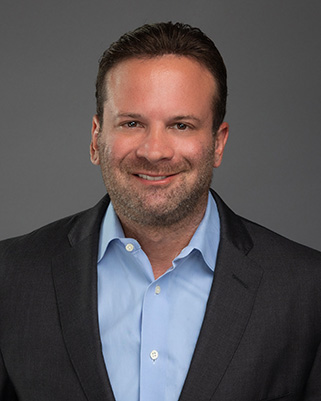Originally published 7/25/2022
In January, 2025 the journal Prostate Cancer and Prostate Diseases published a study of multiparametric MRI (mpMRI) used to monitor prostate cancer (PCa) patients on Active Surveillance (AS).[i] There were 530 patients in the study, and the average follow up was 8.5 years.
Although none were on “Super AS” as described below, the study itself is worth drawing attention to because it applies in all AS cases. All study patients were monitored by mpMRI, using PI-RADS scores. Over the course of the study, patients underwent targeted biopsy if their scan revealed an area suspicious for clinically significant PCa (PI-RADS >2).
The entire time, a small minority of men had MRIs that showed no PCa, also called “MRI invisible cancer.” As long as their MRIs were invisible for cancer, no biopsies were performed. The authors write, “MRI invisible cancers demonstrated dramatically reduced rates of progression and no patient required intervention. Despite the absence of routine biopsies in the MR negative group, none of these patients progressed over time to GG ≥ 3 or metastatic disease.”
The authors concluded that using image-guided AS management alone is sufficient to identify clinically significant disease which would then be subject to MRI-guided targeted biopsy for diagnosis. This is good news for men on AS since it would safely reduce the number of invasive biopsies.
“…any energy source can be applied to the super-active surveillance concept allowing more men to consider a tissue-preserving therapy for prostate cancer.”
– Corradi et al. 2019[ii]
Thanks to a growing recognition among professionals that clinically insignificant PCa may never become life-threatening, a larger percentage of low-risk PCa patients are starting their treatment journey with Active Surveillance (AS). The American Cancer Society offers a general description:
Usually [AS] includes a doctor visit with a prostate-specific antigen (PSA) blood test about every 6 months and a digital rectal exam (DRE) at least once a year. Prostate biopsies and imaging tests may be done every 1 to 3 years as well. If your test results change, your doctor would then talk to you about treatment options to try and cure the cancer.
There is not one universal AS protocol. However, all clinicians agree on the main principle: close surveillance according to “predefined thresholds for treatment based on identification of progression to life threatening but still curable disease.”[iii] Monitoring is needed because AS involves no clinical control of PCa. For example, one doctor may order a biopsy at one year, then a program of specified monitoring biopsies at intervals. Another may rely on a combination of regular PSA blood tests plus multiparametric MRI (mpMRI) at specified intervals, with a biopsy only if either or both results show a change.
AS differs from conventional observation (also called Watchful Waiting or WW) in that it requires more from the patient: recommended healthy changes in diet, exercise, stress management, etc. There is scientific evidence that such choices may act to control PCa naturally, prolonging the period in which low risk disease does not mutate to more dangerous disease. Many patients find this to be a positive experience as their overall wellness improves. But this kind of self-affirmation doesn’t work for everyone. Committing to AS can be stressful. It takes a certain attitude or psychological state to cope with the idea of cancer living in one’s body. As one article puts it, “Compliance in AS demands a commitment, significant intellectualization, and conviction to ameliorate the anxiety motivated by thoughts, either own or from else, that the diagnosed cancer may mutate and go wild.”[iv] This explains why many men on AS simply can’t tolerate waiting for the sleeping dragon to stir, and decide to quit AS.
A new concept: Super Active Surveillance
Now a new term has entered the vocabulary of PCa treatment: Super Active Surveillance (also written superactive surveillance or super-active surveillance). While it is not yet in widespread use, it’s a concept already showing up in published research articles. Basically, it’s a boost to AS by adding a focal therapy to destroy what is called the index lesion (the tumor most likely to harbor significant PCa). In other words, Super Active Surveillance adds a method of cancer control that can avoid dreaded side effect risks of whole gland treatment. Not only does this alleviate anxiety and worry over low risk PCa growing in one’s body, it potentially paves the way for more patients with favorable intermediate risk PCa to monitor their disease rather than move to immediate aggressive treatment.
For a focal ablation to satisfy the needs of patients on AS, it must have the following characteristics:
- Minimum to no risk of adverse side effects,
- Does not burn any future treatment bridges, nor does it increase the difficulty or side effect profile of future radical treatments (prostatectomy or radiation),
- Rapid recovery and resumption of normal activities,
- Preserves prostate function/ejaculation and erectile function,
- Urinary function shows no change (or even improves).[v]
Even though the term Super Active Surveillance is recent, it perfectly captures what the Sperling Prostate Center has been offering for years. Thanks to our excellence in multiparametric MRI during AS, we have assisted over a thousand patients on AS to enjoy peace of mind, knowing that we can identify an increase in PCa activity very early, while all treatment options are still open. More to the point, our Center has also provided that “boost” of super confidence for those men who added Focal Laser Ablation (FLA) to their AS protocol. While the opening quote suggests that any energy source (heat, cold, laser, HIFU, photodynamic, steam) can be applied in conjunction with AS, the precision, control and monitoring of FLA therapy stand out in meeting five characteristics listed above. In addition, for properly qualified patients, FLA’s cancer control rates are comparable with whole gland treatments without their risks. Many of our Super Active Surveillance patients thus far have had no need for any other treatment.
Reis, et al. underscore our forward-looking monitoring-plus-focal-therapy approach: “We believe that what’s being called ‘super-active surveillance’ or our preference ‘precise multifocal partial gland ablation’ is the next frontier for physicians and patients.”[vi] We are proud to be pioneers in PCa detection, diagnosis and treatment. At our “Super Center,” the frontier of super active surveillance is already here.
NOTE: This content is solely for purposes of information and does not substitute for diagnostic or medical advice. Talk to your doctor if you are experiencing pelvic pain, or have any other health concerns or questions of a personal medical nature.
References
[i] Klotz L, Loblaw A, Zhang L, Mamedov A, Vesprini D. Prognostic value of MR visibility/invisibility in men on Active Surveillance. Prostate Cancer Prostatic Dis. 2025 Jan 17.
[ii] [i]Corradi RB, Travassos TC, Reis LO. Prostate cancer “super-active surveillance” era opened by vascular targeted photodynamic therapy. Res Rep Urol. 2019 May 29;11:157-163.
[iii] Ghodoussipour S, Lebastchi AH, Bloom JB, Pinto PA, Berger A. Super active surveillance for low-risk prostate cancer | Opinion: No. Int Braz J Urol. 2019 Mar-Apr;45(2):215-219.
[iv] Reis LO, Andrade DL, Bianco FJ Jr. Super active surveillance for low-risk prostate cancer | Opinion: Yes. Int Braz J Urol. 2019 Mar-Apr;45(2):210-214.
[v] Reis et al, ibid.
[vi] Reis et al., ibid.


